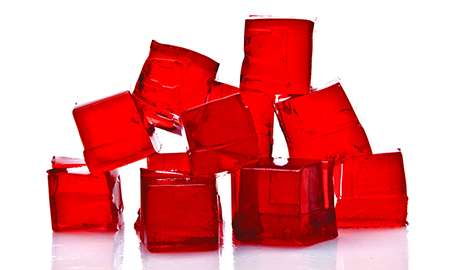Understanding a natural cloaking mechanism

Researchers at Yale and in Europe are exploring a natural "cloaking" mechanism that allows certain elastic materials—think Jell-O, for instance—to imbibe substantial amounts of liquid droplets without changing their own mechanical properties. Writing in the May 18 online edition of the Proceedings of the Royal Society A, John Wettlaufer and his colleagues expanded on previous work about surface tension to find the limits of such natural cloaking.
"Our theory says you can put in a variety of inclusions and get softening, stiffening, or nothing, in terms of the mechanical response," said Wettlaufer, Yale's A.M. Bateman Professor of Geophysics, Mathematics, and Physics.
"There is a mechanical cloaking, in which the properties of a material do not change no matter how many droplets you put in. Jell-O is just a fun example, but the human body is filled with just this sort of effective medium, so our theory provides a rigorous framework to look at the mechanical aspects of physiological response."
More information: Francesco Mancarella et al. Surface tension and the Mori–Tanaka theory of non-dilute soft composite solids, Proceedings of the Royal Society A: Mathematical, Physical and Engineering Science (2016). DOI: 10.1098/rspa.2015.0853
Journal information: Proceedings of the Royal Society A
Provided by Yale University


















